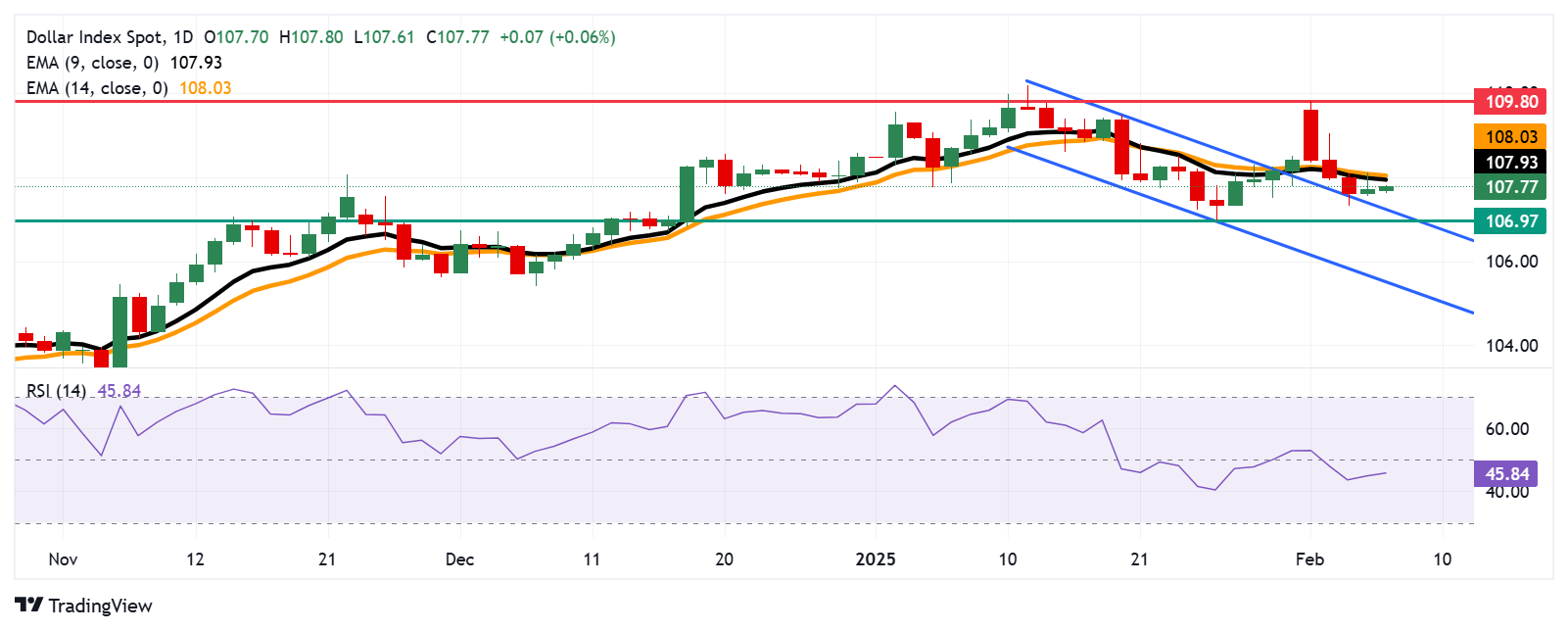Nonfarm Payrolls forecast: US job growth expected to slow in January amid Fed uncertainty
- US Nonfarm Payrolls are set to increase by 170K in January after reporting 256K in December.
- The United States Bureau of Labor Statistics will publish the jobs data on Friday at 13:30 GMT.
- US labor data could offer fresh direction on the Fed interest rates and the US Dollar.
The United States (US) Bureau of Labor Statistics (BLS) will publish the all-important Nonfarm Payrolls (NFP) data for January on Friday at 13:30 GMT.
Amid lingering inflationary concerns under Donald Trump’s presidency, the January jobs report will be closely scrutinized to gauge the US Federal Reserve’s (Fed) interest rate outlook and the US Dollar (USD) performance in the near term.
Trump’s tariff war is seen as inflationary, calling for higher rates.
What to expect from the next Nonfarm Payrolls report?
Economists expect the Nonfarm Payrolls to increase by 170,000 jobs in January, following a 256,000 job gain in December. The Unemployment Rate (UE) is likely to stay at 4.1% in the same period.
Meanwhile, Average Hourly Earnings (AHE), a closely-watched measure of wage inflation, are expected to rise by 3.8% year-over-year (YoY) in January, compared with December’s 3.9% growth.
Following the January policy meeting, the Fed held the benchmark policy rate in the 4.25%-4.50% target range but altered the language in the policy statement to a slightly hawkish tone. The US central bank removed the earlier statement saying that inflation “has made progress” towards its 2% inflation goal while noting only the pace of price increases “remains elevated.”
Fed Chairman Jerome Powell, in his post-policy press conference, stated that the Fed wants to see further progress on inflation and could see a pathway for that, adding, “we don’t need to be in a hurry to make any adjustments.”
Despite the hawkish hold, markets continue expecting 46.3 basis points (bps) of Fed rate cuts by December, according to LSEG data, with a quarter-point reduction fully priced for July. Therefore, the January jobs data hold the key to affirming the strength of the US labor market, which will likely have a strong bearing on the Fed rate cut expectations for this year.
Previewing the January employment situation report, TD Securities analysts said: “Payrolls are set to lose momentum at the start of 2025, with temporary shocks helping to keep the headline gain under the 200K mark.”
“The UE rate likely stayed unchanged at 4.1%. The BLS will also unveil material revisions for payrolls and household employment data,” they added.
How will US January Nonfarm Payrolls affect EUR/USD?
The US economic data releases are back in focus as trade war fears take a back seat for now, reflective of the ongoing decline in the US Dollar due to its reduced appeal as a safe-haven asset.
Earlier in the week, the BLS reported that the JOLTS Job Openings dropped to 7.6 million in December, down nearly half a million from November’s 8.1 million. The Automatic Data Processing (ADP) announced on Wednesday that employment in the US private sector grew by 183,000 jobs last month, more than the estimated 150,000 and December’s 176,000 jobs creation.
The mixed US employment data failed to offer any comfort to the Greenback heading into Friday’s NFP release.
If the headline NFP figure shows a payroll growth below 150,000, the US Dollar downtrend could gain traction with the initial reaction to the data. Disappointing headline NFP print could revive dovish Fed expectations. In such a scenario, EUR/USD could swing back higher to the 1.0500 neighborhood.
On the other hand, an upside surprise to the NFP and wage inflation data could affirm the Fed’s hawkish tone, fuelling a fresh recovery in the USD while driving the EUR/USD pair back toward 1.0250.
Dhwani Mehta, Asian Session Lead Analyst at FXStreet, offers a brief technical outlook for EUR/USD:
“The EUR/USD turnaround from three-week lows of 1.0210 appears capped by the 50-day Simple Moving Averages (SMA) at 1.0408 in the countdown to the NFP showdown. Meanwhile, the 14-day Relative Strength Index (RSI) challenges the 50 level from above. These technical indicators suggest that the pair could resume its downside in the near term.”
“Buyers need a decisive break above the January 30 high of 1.0468 to target the 1.0500 key level. Acceptance above that level is critical to unleashing further recovery toward the static resistance near 1.0535. Conversely, if EUR/USD yields a sustained break of the 1.0300 mark, sellers will then aim for the three-week troughs just above 1.0200.”
Economic Indicator
Nonfarm Payrolls
The Nonfarm Payrolls release presents the number of new jobs created in the US during the previous month in all non-agricultural businesses; it is released by the US Bureau of Labor Statistics (BLS). The monthly changes in payrolls can be extremely volatile. The number is also subject to strong reviews, which can also trigger volatility in the Forex board. Generally speaking, a high reading is seen as bullish for the US Dollar (USD), while a low reading is seen as bearish, although previous months’ reviews and the Unemployment Rate are as relevant as the headline figure. The market’s reaction, therefore, depends on how the market assesses all the data contained in the BLS report as a whole.
Read more.
Next release: Fri Feb 07, 2025 13:30
Frequency: Monthly
Consensus: 170K
Previous: 256K
Source: US Bureau of Labor Statistics
America’s monthly jobs report is considered the most important economic indicator for forex traders. Released on the first Friday following the reported month, the change in the number of positions is closely correlated with the overall performance of the economy and is monitored by policymakers. Full employment is one of the Federal Reserve’s mandates and it considers developments in the labor market when setting its policies, thus impacting currencies. Despite several leading indicators shaping estimates, Nonfarm Payrolls tend to surprise markets and trigger substantial volatility. Actual figures beating the consensus tend to be USD bullish.
Employment FAQs
Labor market conditions are a key element to assess the health of an economy and thus a key driver for currency valuation. High employment, or low unemployment, has positive implications for consumer spending and thus economic growth, boosting the value of the local currency. Moreover, a very tight labor market – a situation in which there is a shortage of workers to fill open positions – can also have implications on inflation levels and thus monetary policy as low labor supply and high demand leads to higher wages.
The pace at which salaries are growing in an economy is key for policymakers. High wage growth means that households have more money to spend, usually leading to price increases in consumer goods. In contrast to more volatile sources of inflation such as energy prices, wage growth is seen as a key component of underlying and persisting inflation as salary increases are unlikely to be undone. Central banks around the world pay close attention to wage growth data when deciding on monetary policy.
The weight that each central bank assigns to labor market conditions depends on its objectives. Some central banks explicitly have mandates related to the labor market beyond controlling inflation levels. The US Federal Reserve (Fed), for example, has the dual mandate of promoting maximum employment and stable prices. Meanwhile, the European Central Bank’s (ECB) sole mandate is to keep inflation under control. Still, and despite whatever mandates they have, labor market conditions are an important factor for policymakers given its significance as a gauge of the health of the economy and their direct relationship to inflation.


